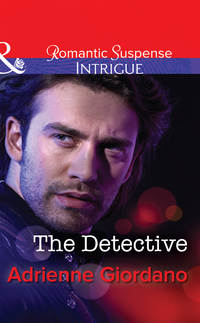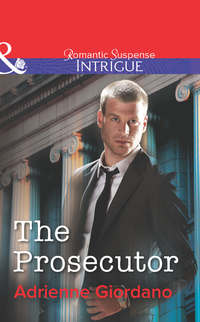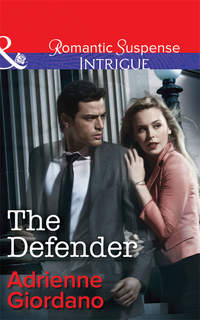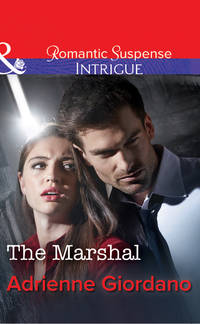
Полная версия
The Rebel
“Thank you. I take it you like art?”
He shrugged. “I like to study things. To research them. Like this building. I saw it and had to know its history.”
“All right, what do you see in that sculpture?”
“The mouth.” He went back to the photo on the stand. “It’s not quite there yet.”
Amazing. “I worked on the lips all morning. Something isn’t right.”
Now he looked back at her, a full-on smile exploding across his face, and Amanda’s lungs froze. Just stopped working. To heck with Michelangelo, Amanda LeBlanc now had a David of her very own.
“I have another deal for you.”
Her lungs released and she eased out a breath. “You’re full of deals today.”
“I’m a lawyer. It’s what I do.”
“Fine. What’s your deal?”
“I’ll tell you what the problem is with your sculpture if you go with me to see this detective.”
Moving closer, she kept her gaze on him and the not-too-smug curve of his mouth. “You know what’s wrong with the lips?”
“I believe I do.”
As a trained artist, one with a master’s in fine arts, she’d spent hours trying to figure it out, and now the history major thought he knew. Oh, this was so tempting. She’d love to prove him wrong and knock some of that arrogance right out of him. But, darn. The way he carried that confidence, that supreme knowing made her stomach pinch.
“What’s wrong, Amanda? Cat got your tongue?”
And ohmygod, he was such a weasel. A playful weasel, but still. She snorted. “Please. The cat having my tongue has never been an issue. Perhaps I’m merely stunned by your gigantic ego.”
“Oh, harsh.” He splayed his hand and his beautifully long fingers over his chest, but his face gave him away, all those sharp angles softly curving when he smiled. “You wound me.”
Such a weasel. From her worktable, she grabbed her flat wooden tool. “Okay, hotshot. Let’s see what you’ve got.”
“If I tell you and it works, you go with me to see that detective. That’s the deal.”
“Yes. If it works, I’ll go with you.”
Silly, silly girl. All this to prove him wrong. Something told her, if he nailed this, she might never hear the end of it.
He smiled at her, spun to the sculpture and, without touching it, pointed to the right corner of the mouth. “It’s not the lips so much but the small depression that should be right there.”
What now? Lunging for the photo, she analyzed the corner of the CEO’s mouth. Dammit. Right there. Well, not right there. The dimple was so slight it couldn’t even be called a dimple. Her issue hadn’t been the lips at all, but the mouth in general. And, oh, she could rail about how David had tricked her, about how she specifically meant the lips and the deal would be negated.
But she should have caught that. Even the tiniest of details, as they’d both just learned, could ruin a project.
“David Hennings, I don’t know whether to kill you or kiss you.”
His hand shot up. “Can I vote?”
She cracked up. “No. But darn it, I can’t believe I didn’t catch that.”
“You were looking too hard. Happens to me sometimes when I’m working cases. I’ll be searching for precedents and—bam—someone else reads my notes and in five minutes knows exactly what I need. It’s irritating as hell.”
“It sure is.”
“That being said...”
He strode back to where they’d been sitting, his smile growing wider by the second. So smug.
And she’d just handed him that victory.
He slid his phone from the side pocket of his jacket and held it up for her to see. “What time shall I tell the detective we’ll be there?”
* * *
DETECTIVE LARRY MCCALL ushered Amanda and David into a small conference room at Area North headquarters. The old building didn’t have the charm her building had, but with a few fixes and a splash of fresh paint the dreary and dull white walls wouldn’t feel so confining. Then again, Amanda supposed a police station wasn’t meant to be paradise.
Inside the room, a veneer table large enough for six had been jammed into the corner. Probably the only way it would fit. Five chairs—what happened to the sixth?—were haphazardly pushed in, a couple almost sideways. Maybe the last meeting had ended in a rush.
Amanda took the chair Detective McCall held for her while David remained standing, casually leaning against the wall directly across from her. “Thank you,” she said.
“No,” the detective said. “Thank you for coming in.”
“Detective, please, let’s not get ahead of ourselves. As I said—”
McCall waved her off. “Yeah, I know. You’re not a forensic artist and you’re only having a look. I get it. Still, I appreciate whatever you can do.”
He slapped a file onto the table, the fwap reverberating in her head, making her ears ring. What am I doing? She shouldn’t be here. She’d spent years running from the lure of this kind of work. Years. And for good reason. As talented as her mother had been, her work with law enforcement had been the end of the fairy tale. For Amanda. For her father. And most of all, for her mother.
David shifted, drawing her attention, and she brought her gaze to his. He cocked his head—he did that a lot—and stared at her face while she worked on arranging her features into neutral. No clues here. Still, he narrowed his eyes and she knew he’d sensed something. Those haunting dark blue eyes of his burned right through her.
The file McCall had slapped on the table was open in front of her and she pulled her gaze from David, needing to be free of whatever psychoanalysis he performed on her. In front of her was a two-dimensional facial reconstruction—a detailed sketch—of a woman with shoulder-length dark hair flipped up at the ends. Big eyes. So young. The woman appeared to be late teens, perhaps early twenties. If so, the hair was wrong. No teenager would wear her hair in that style.
Not my call.
Keeping her hands in her lap, Amanda leaned forward. The drawing had been done on bristol paper, its surface rough and able to tolerate abundant erasures.
She glanced at McCall. “Was this done from the skull itself?”
“Uh, no.” He reached over, shuffled through some pages in the file and pulled out photos of the skull. “These. Why?”
“Photos can distort the skull. If the lighting is wrong, the artist can misinterpret something.”
Which could have been her problem with the photo of the firefighter.
“No foolin’?”
Amanda sat back, still refusing to touch the pages. If she did, they’d somehow bond her. “It can happen. The hair is long. Was there hair found near the skull?”
“Yeah. A few strands. We have it in evidence.”
Okay. Well, she knew that was right at least. But truly, if they wanted an accurate image, the artist should have been given access to the skull.
“Did you have any hits at all on the drawing?”
“Not a one.”
David finally moved from his spot against the wall and looked over her shoulder at the photo. His presence behind her, looming and steady, sent her body mixed messages. Messages that made her think he could handle anything. That the sheer size of him wouldn’t relent. Ever.
Her gaze still on the composite, Amanda cleared her throat. “No missing-person reports?”
“Nothing that fits the timeline. Or her age.”
“I’m assuming an anthropologist has studied the bones and given an age estimation?”
“Yeah. His notes are in there. He thinks she was early twenties. White.”
Amanda dug through the stack of papers, located the anthropologist’s notes and began her review, alternately checking the photos of the skull until she’d read the entire report.
David moved back to his spot against the wall, this time crossing his legs at the ankles and sliding his hands into the front pockets of his jeans. “What do you think?”
“About?”
He shrugged. “Anything. The photo, the file.”
“The drawing is good. At least from what I can tell. One thing that’s bothering me is that the artist didn’t have a chance to study the skull. If I’d been assigned this, I would have requested to see the actual skull.”
“What would that have done?”
“Sometimes photography distorts images. As I mentioned, the lighting could throw something off. Plus, I’d want to check tissue-depth data and get a frontal and lateral view of the actual skull. Looking at these photos, it’s hard to tell how big it is. All of that plays in to the drawing.”
And might be why they didn’t get any hits on this poor woman. The artist, although quite good, could have missed something simply because he—or she—was not given the actual skull to sketch from. This victim was buried in a field, tossed away like trash, and the drawing might not even be accurate.
Which meant a family somewhere was still wondering where their loved one could be. And that old yearning for her mother kicked in.
At least she knew where her mother was.
She glanced at the drawing again, and McCall jumped all over her. “What if I could get you the skull? I cleared you with the brass already. They’re on board with any help you can offer.”
Oh, no. She stacked the papers, setting the anthropologist’s report on top of the drawing and the photos of the skull so she didn’t have to see them. Didn’t have to feel the pull of a dead woman begging for justice.
She bit her bottom lip, really digging in because—what am I doing?—as hard as she tried to bury the image of that young woman, it was there, flashing in her mind.
“Amanda?”
David’s voice. He was still leaning against the wall, once again studying her, trying to read her. Such a lawyer. Damn him for bringing her here. And damn her for allowing him to do it. For making that stupid bet.
She shoved the folder toward Detective McCall. “If I can see the skull itself, I’ll do another drawing so you can compare it to what the other artist did. Having the actual skull might make a difference. That’s as far as I’ll go, Detective.”
McCall bobbed his head, smiling as if he’d won the lottery. “No problem. I’ll call the lab, tell ’em you’ll be over. Anything you can do is great. We—uh—can’t pay you, though. You know that, right?”
Now she looked back at David, grinning at him, returning the smugness he’d hit her with earlier. “Detective, it’s your lucky day because Mr. Hennings has agreed to pay my fee. So, as soon as you arrange for me to see that skull, I’ll get to work and hopefully, we’ll find out where this woman belongs.”
* * *
WANTING TO BE done with the entire situation, Amanda had agreed to go right over to the lab. Like Pamela Hennings, the detective was on a mission. Which meant David had had to drive her home to pick up her tools.
She’d offered to make the trip to the lab herself, but he’d claimed the least he could do was take her and then pick her up again when she’d completed her work.
Considering her nerves and angst over seeing the skull, Amanda didn’t argue. Getting behind a wheel while distracted would do her no good.
And here they were. The forensic anthropologist, Paul something—she’d missed his last name thanks to the ringing in her ears—from the county’s forensic lab set the skull with its vacant eyes staring straight up at her on the cork ring. She clasped her fingers together, squeezing hard enough that her knuckles protested, and snapped her mind back to her task rather than her nerves.
Dull beige walls and glaring overhead lights added to the sterile, stark atmosphere of the lab and sent a fierce chill snaking from her feet right up into her torso.
She forced her thoughts to the gloved hands positioning the skull inside the ring. Paul tilted it up another half inch so it would rest against the back of the ring, his hands gentle—reverent even—as he completed his task. This person, whose only remains were the skull in front of them, belonged somewhere.
Give her a name. Whether Amanda could complete that task would be determined, and she’d resist pressuring herself. For now, she’d be an artist, studying a subject, keeping her emotional distance, but doing her best to re-create a drawing that might help identify the victim.
Amanda squeezed the pencil in her hand, then relaxed her grip before she broke the thing. “Tell me about her.”
“She’s in remarkably good shape considering the elements. Based on the teeth and shape of the head, we’re estimating her age at early twenties. Maybe late teens. We made a cast of the skull in case of reconstruction, but there’s never been one done. Budgeting issues.”
“So the cast is already made?”
Ugh. Amanda closed her eyes, thought of her mother and let out a frustrated laugh. It would be so like her mom to throw this project in her path, urging her to press on because, yes, they had a cast already made and she could take possession of it. To at least try the reconstruction. Nice, Mom.
“Yes,” Paul said. “It’s been sitting here waiting for someone to work on her.”
Amanda brought her attention back to the skull on the table. Detective McCall had told her the anthropologist had determined the victim was a white female, and the flatness of the face and the long, thin nasal openings appeared to represent that.
“She’s a Caucasoid,” Amanda said.
“Yes.” He pointed to an area at the back of the skull. “In terms of injuries, there’s a small, depressed spot here. Looks like she was hit with something small, but it was a forceful impact. From the shape of the wound, it could have been a hammer. It fractured her skull.”
“Poor thing.”
“Whoever buried her didn’t dig far enough. That’s why the dog dug up the skull. We never found the rest of the bones. Animals may have gotten to them and dragged them to another spot. That field is too big to dig up the entire thing looking for her.” He held his hand out. “This is what we have.”
Amanda’s stomach twisted. “If they’d buried her deeper, she might never have been found.”
“Probably not.”
“I’ll do another sketch. See if it’s any different than the last one. I brought everything I need.” She pointed her pencil at the table. “Can I work here?”
“That’s fine. Holler if you need me.”
“I will. Thanks.”
Paul wandered off to a lab table with a giant microscope on the far side of the room. From the looks of all the equipment stacked on shelves and the shiny tables, he had plenty to do.
She dug her iPod from her purse, shoved the earbuds in place and scrolled her music library. For this, she knew exactly what she needed. A nice classical mix. She poked at the desired playlist, aptly named DESPERATE, and got down to business.
From her briefcase, she pulled a small stack of tracing paper, pencils and her copy of the tissue-depth table for Caucasoids. In the file Paul had left her, she located the life-size frontal and lateral photographs of the skull, set them side by side on her drawing boards and taped the corners. Over the frontal photograph, she placed tracing paper and began outlining the face while Chopin’s Nocturne No. 2 softly streamed through her earbuds.
Song after song played as she carefully outlined, corrected and outlined again, taking her time, double-checking each element until it was time to call Paul over to help with tissue-depth markers. Then she’d begin filling in the face, adding the contours of the jaw and cheeks and then the eyebrows and hairline. The tiny details she could add later, but for now she focused on a blueprint to work with. Little by little, each element brought some new aspect to the face, giving it lifelike qualities.
The hair. Detective McCall had told her they’d found a few long, dark hairs with the body. How long, she wasn’t sure, but she’d try shoulder length. After outlining the overall shape of the hair and filling in the length based on the hair found at the scene, she added subshapes—loose waves in the front—and then blended dark and light tones for contrast.
Chopin shifted to Beethoven again. Could that be? More than two hours’ worth of a playlist? And she still had to fill in the details on the frontal eye–nose area. She stopped shading and glanced around. Paul had moved to a desk in the corner of the lab, clearly unconcerned about the approaching end of the workday.
Amanda sat back and stretched her shoulders as a beautiful young woman with sharp cheekbones and a small button nose stared back at her.
A woman with a hole in the back of her skull.
Stomach knotted, Amanda closed her eyes, forcing herself to detach. To not get sucked into the mind-ravaging warfare this case would create. Her mother had done this work on a regular basis, felt this pull of longing and heartbreak. Amanda supposed a person eventually got used to it. After all, the cause was noble, if not emotionally eviscerating.
She opened her eyes to someone whose family had yet to know her fate. Amanda thought back to those first brutal days without her mom, to the shock and anger and bone-shattering ache that came with sudden and tragic loss.
To this day, she didn’t fully understand—probably never would—how her mom had thought suicide was the only option. Obviously, the emotional place her mother had reached was too dark, too painful to find her way free. Her work as a forensic artist probably hadn’t helped, but Amanda would never truly know why her mom had done what she did.
At least Amanda had a place to visit. A place to sit and talk and grieve.
A proper grave site.
She ran her fingertips over the edge of the paper she’d sketched on. This woman’s family had no answers. Maybe they assumed she was dead. Maybe not. Maybe down deep they held on to hope that she’d walk back into their lives.
And that tore into Amanda like a rusty chain saw. At least she knew her mother was gone.
“I’ll bring you home,” she said.
Chapter Four
While David stood beside her at the lab table, Amanda stored her drawing boards, wondering what kind of coward buried a woman and walked away, leaving her body to be ravaged by animals and the elements.
She didn’t know. Didn’t care to. All she knew was sitting in that lab, staring at the skull, sketching based on estimations of tissue depth, she’d experienced a buzz, the high of having the ability to change the course of an investigation—something her mother used to talk about. Amanda had never experienced it. Never quite understood the lure of forensic work. As a kid, she’d thought it all seemed...morbid...and she hadn’t grasped what her mother found so intriguing.
Until today.
She thought about her workbench back in the studio where a forensic workshop registration—the one she kept putting off—was weighted down by a giant conch shell she’d found on a trip to Florida when she was nine. A shell her mother had uncovered while wading in the surf.
I know, Mom. I know. Every day she’d been without her mother, she’d never doubted her presence.
Beside her, David stepped closer and she glanced up, their gazes locking because when he pinned those haunting dark blue eyes on her, she couldn’t resist the pull of them reaching right in and paralyzing her.
Something she didn’t want to feel. With anyone.
“Everything okay?”
“Fine.”
Breaking eye contact, she studied the intricate stitching on the shoulder of his jacket and the way the seam fell at exactly the right spot, the cut so perfect for his big body that she realized it might be nice, sometime soon, to have sex.
And wow. What a mess her mind was today. She couldn’t deny there was a certain heat between them. From the time she’d opened her front door, she’d felt it. That simmer.
“This project,” she said, keeping her voice low so she wouldn’t be overheard by Paul, who patiently waited for them to get packed up. “It’s complicated.”
Receiving her message that she didn’t want Paul eavesdropping, David dipped his head lower. “The sketching?”
No. You. “It’s more than that.”
Because with him she felt things, tingly things that made her system hum, gave her a little high. If only she liked that high. Highs and lows, in her experience, shattered lives. But it had been so long since she was beyond her personal safe zone. Since she allowed herself to immediately feel a certain way about a man. About this man. Feelings like that messed with her emotions, brought her to places that terrified her. For ten years she’d worked to not turn into a person tortured by her own emotions.
But David kept surprising her. In a good way. In a way that made something warm and gooey chase away the cold, empty heartbreak she’d felt in the lab. That alone was worth...she didn’t know. She’d simply never met anyone who affected her this way. And so quickly.
Needing to get her mind right, she shook her head and stored her iPod in her bag while the quiet in the lab made her arms itch. Too quiet.
“When I was nine,” she said, “my mom found a conch shell on the beach in Florida. I have it on my workbench where I can see it every day. It’s a paperweight for important things. Right now one of those things is a registration form for a forensic workshop I’ve been thinking about taking. Pretty high-level stuff. I keep putting off registering.”
“Why?”
She gave up on packing her things and faced him. “My mother was a forensic artist.”
His eyebrows lifted. “She doesn’t do it anymore?”
“She died. Ten years ago. Killed herself.”
Wow, Amanda. Totally on a roll here. That miserable fact had only been spoken a handful of times and each time to people who’d proved their loyalty. People she could trust. Apparently, David was now one of those people.
“I can’t imagine that. I’m sorry.” He stood, unmoving, his face completely neutral, no judgment or horror, just a mild curiosity over whether she’d continue.
“Thank you. But I’m only telling you so you understand. She did a drawing once that helped convict a man of murder. He went to prison for a few years and was later exonerated. She never forgave herself.”
His head snapped back and Amanda held up her hand. “She didn’t kill herself over it, but it didn’t help. My mother always battled depression. She may have been bipolar. I’m not sure. All I know is that there were tremendous highs followed by days she couldn’t get out of bed. Work was her savior. She loved making a difference. After that man was exonerated she never did another sketch. Never. I think the loss of her work sent her into a spiral she couldn’t come out of.”
“And now we’re asking you to do a reconstruction.”
“Yes.”
David cracked his neck, finally showing some indication of his thoughts. “If I’d known, I wouldn’t have pressured you.”
“I’ll do the sculpture,” she said.
For a moment he stood in his spot, his face deadpan, not even a flinch as dead air clogged the space between them. “I’m... Wow. What made you change your mind?”
So many things. My mother. An unidentified dead woman. She pointed at the image she’d created still sitting on the lab table. “Look at her. She was a beautiful girl. At least from my interpretation.”
He reached for the sketch, then stopped, his hand in midair. “May I?”
“Sure.”
“Your work is amazing.”
He set the image back on the table and angled back to her. “Are you okay?”
“I am. I thought doing the work my mother loved would be this big dramatic scene where I’d be doomed by my own emotional sludge. Turns out, it wasn’t so bad. If anything, I got a taste of what my mom went through each time. It’s odd, but it was like I had a piece of her right there with me, and that made me come alive a little bit.” Oh, what a thing to say to a man she barely knew. “I’m just babbling.”
“You’re not. I get it.” He winced. “Ew. Sorry. No, I don’t get it. Not really. What I should have said was I can see where, in a weird way, you’d connect with the work.”
All she could do was nod. Talking about this, letting him dissect her and examine her motivations, wouldn’t help her stay detached.






